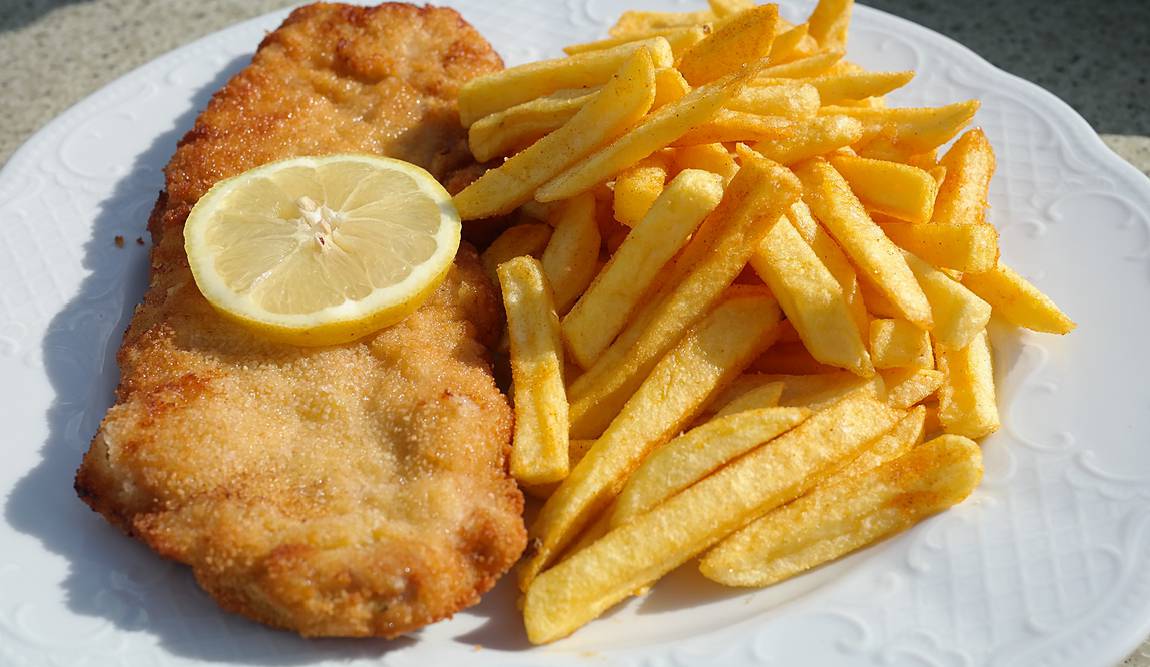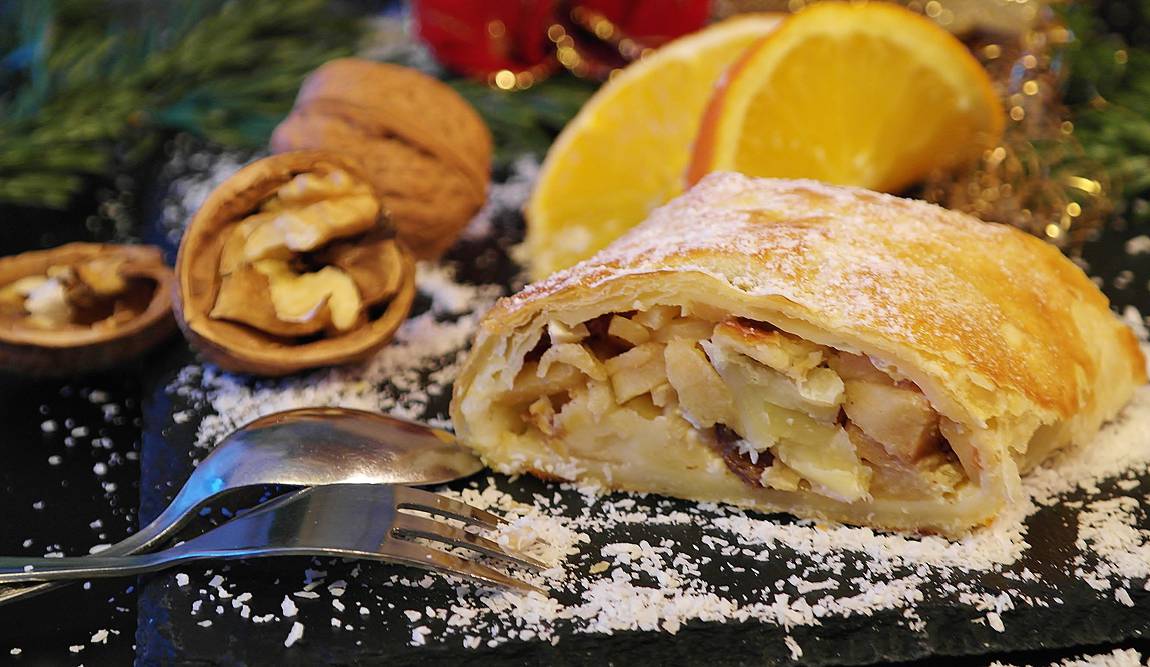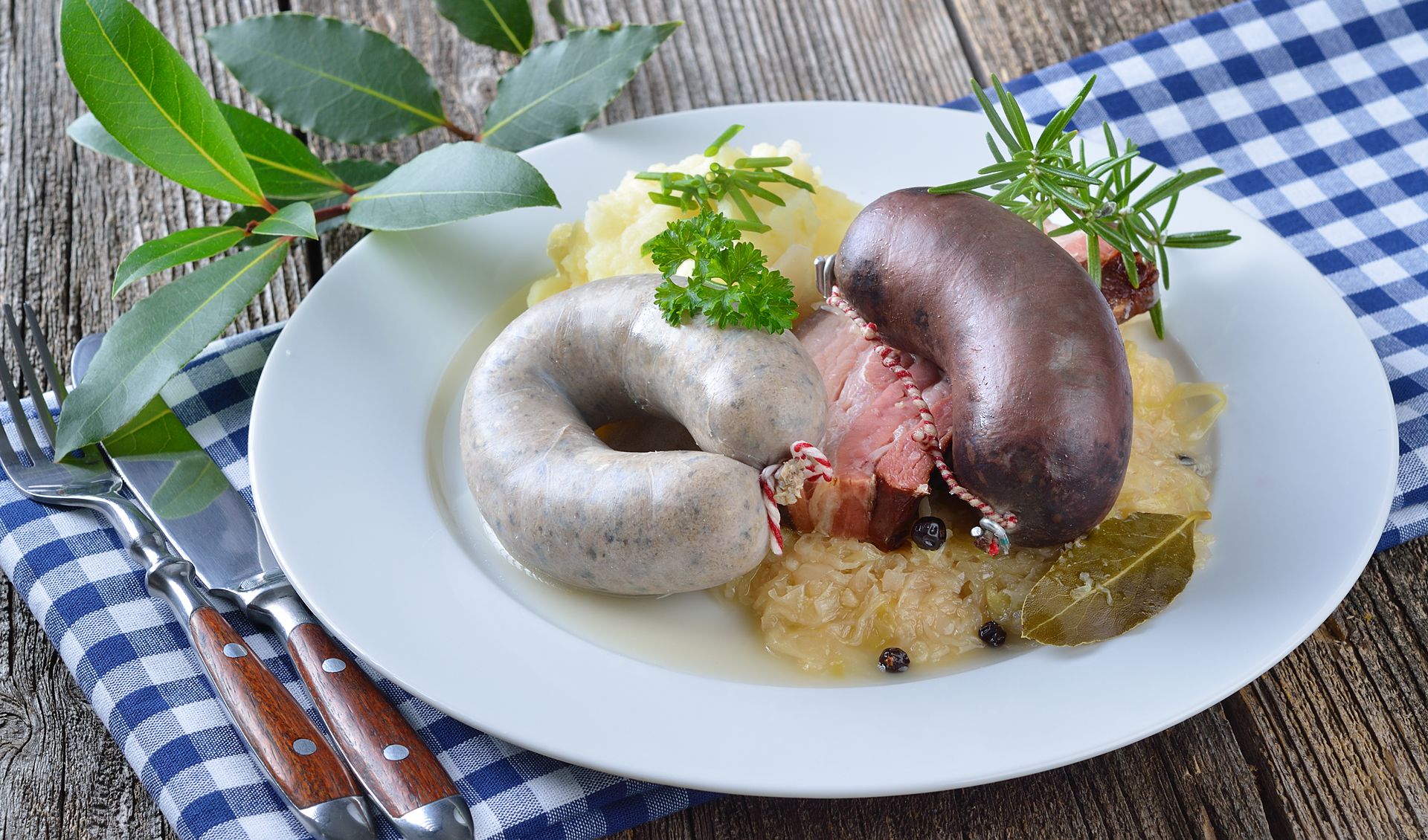When it comes to traditional Austrian dishes, anyone can think of Viennese coffee and strudel. If you think about it, Viennese sausages, schnitzel and perhaps beer and schnapps come to mind.
Not much to go on, especially if you are planning a trip to Austria with a child. But it's worth getting to know the traditions of Austrian cuisine beforehand: firstly, so that you don't get lost in the long names on the menu, and secondly, so that you know exactly what to offer the children.
Kidpassage's guide to Austrian cuisine contains all the dishes that are suitable for children.
Contents

Features of Austrian cuisine
In terms of traditional Austrian cuisine, the food here is largely unadulterated and very hearty. Austrians like to eat a hearty meal and meat is always on the table — beef, pork, lamb, game, poultry and offal are all highly prized.
Cabbage and potatoes are the main vegetables, but roots are also used — parsley, celery, parsnip. Dumplings, noodles and pancakes are also common. Carinthia, the lake region, is famous for its fish dishes.
Gourmets can easily trace the influence of neighbouring cuisines: the love of sausages and bratwurst comes from Germany, thick goulash from Hungary, soup with gnocchi or flour dressing from the Czech Republic, polenta from Italy.
But there are dishes in Austria that have the word "Viennese" in their name, even if they are prepared in other countries. Let's talk about them.
Austria's famous national dishes
The most famous dish in Austrian cuisine is the Wiener Schnitzel. It is worth going to a restaurant for this dish: a juicy, plate-sized veal cutlet in golden breadcrumbs is a real surprise.
The schnitzel is also delicious. They are usually served with potatoes or cabbage salad, and after such a nutritious meal you don't need to order anything else. Don't worry if you don't like schnitzel.
The meat is minced very thinly and can be eaten by any tourist with an appetite while sightseeing in Vienna.

Viennese sausages are usually found on menus under the name Frankfurter. The recipe is thought to have been invented by the Frankfurt butcher Johann Lahner, who added beef to the traditional pork mince. Note that in Austria, sausages are fried rather than boiled, so they tend to be unaccustomedly greasy.
The typical Viennese dish, strudel, may seem simple at first glance. A juicy filling of sliced apples and sugar wrapped in a fine pastry is a true Viennese apple strudel.
There is another version, the Topfenstrudel, with a cream cheese filling. You can use anything as a filling: apricots, cherries, poppy seeds, even spinach.

Strudel is not only to be tasted, but also to be seen being made. There are demonstrations and master classes for those who want to try.
The second most famous Austrian dessert is Sachertorte. The chocolate sponge crust, dipped in apricot jelly and covered in chocolate icing, has a refined and unique taste.
The recipe for this cake was once the subject of a legal dispute. As a result, two versions of the recipe were approved: one used by the Sacher confectionery and the other by the Demel bakery.
When it comes to Viennese coffee, however, there is some confusion. Some people call it chilled coffee with ice cream, others call it coffee half and half with frothed milk, also known as melange. Either way, both are popular in Austria: try both and decide which you like best.
Tasting these dishes has long been part of the excursion programme. But sometimes tourists just have tosatisfy hunger. What else is there to try in traditional Austrian cuisine?
Salads
The most popular salad in Vienna is called Viennese salad. Its composition is very simple: boiled potatoes, onions and dressing. This is why it is sometimes called "Erdapfel Salat" on menus. The dressing is vegetable oil, vinegar and sometimes horseradish or mustard.

Carinthia has its own special salad, made with lettuce and chicory. Other salads — made from boiled and fresh vegetables with meat — are usually found on restaurant menus.
Soups
In Austria, soups are traditionally made with meat broth. Beef broth with a variety of dressings creates delicious dishes.
- Frittaten Suppe — broth with pancakes cut into thin strips.
- Speckknoedel Suppe — a typical dish from Tirol, the region between Austria and Italy. In Italy they are known as canederli. They are large meatballs made mainly with stale bread, eggs and diced bacon, usually served in a tasty vegetable or beef broth.
- Leberknödel Suppe — soup with liver meatballs.
- Gemüse Suppe — a light vegetable soup.
- Griesnockerl Suppe — this soup with Semolina Dumplings is very popular and common in Austria.
Austria also makes goulash, a rich, fatty soup of meat and vegetables. Austrian goulash is not as thick as Hungarian goulash and not as spicy.
If you want to surprise a young gourmet, offer him apple soup.
The sour-milk Soup, Stosuppe, consists of potatoes seasoned with cumin and topped with sour milk or sour cream.
Main dishes
There is also a choice of meat dishes. The first choice is Tafelspitz, a beef stew cooked over a low heat for about five hours in a broth with root vegetables.
Potatoes — boiled or fried in lard — are often served with the tender meat. An unusual but light side dish is topinambour.

Also worth trying are the Backhuhn or Backhendl, the Zwiebelrostbraten (roast beef with onion) and the many cutlets, meatballs and entrecôtes. And children, who are difficult to seat at the table because they like to snack and run away, can be offered a baguette with Viennese sausage.
Holidays in Carinthia offer dishes with trout (Forelle), pike (Fogosch), pike (Hecht), carp (Karpfen) and other river fish.
Vegetable and pasta dishes
Pasta lovers will find a dish to their taste. Kasnudeln, for example, are like ravioli with a cheese filling, while Schlipkrapfen have a meat filling. Schupfnudel, noodles made from potato flour, are delicious.
A hearty dish is Schinkenfleckerl, a pasta casserole with ham.
Groestl is often on the menu in Tyrolean inns. It is a greasy dish of potatoes fried in oil or lard with meat and tomatoes. It is seasoned with aromatic herbs and served with scrambled eggs.
Desserts
But there's one thing that Austria excels at: sweets and desserts. This is where virtuosity comes into its own: Vienna's finest confectioners create works of art, colourful and intricately decorated. What are the specialities of Austrian cuisine? Which of the dozens of cakes, pies and biscuits can you try?
Unlike Hungarian desserts, which are full of buttercream, Austrian sweets tend to be dry. A prime example is the Sacher Torte, which combines sponge cake, apricot jam and chocolate icing. Another example is the Linzer Torte, made with a sandy almond dough and a berry filling.
.jpg)
An omelette, on the other hand, is a feast for the stomach. Kaiserschmarrn is made sweet by adding flour, sultanas and cinnamon to eggs whipped with milk. The crispy, crispy pancake is served with icing sugar or caramel syrup.
Children won't miss Buchteln — boat-shaped cakes filled with poppy seeds or nuts, puff pastries with all sorts of fillings, sponge cakes, Kipferl Christmas bagels, and Palatschinken — sweet pancakes with ice cream and chocolate syrup.
And if you are in Austria at Christmas, you must try Stollen, a yeast cake with candied fruit.
A delicious, melt-in-your-mouth dessert is Nockerln. A soufflé of eggs and cream, baked to a golden crust and served with a cranberry sauce. The dessert originated in Salzburg, but you can try Nockerln at any bakery in Austria.
Beverages
Coffee is traditionally served with desserts in Austria, and if you're ready to introduce the drink to children, order Milchkaffee. Almdudler, a herbal lemonade, is a popular, fizzy, aromatic and refreshing drink.
A non-alcoholic version of the warming Jagatee, made from freshly brewed tea and heated spiced fruit juice, is sometimes found in ski resorts. But it's not hard to find tea and cocoa on the menu.
What to order for your baby
We have included an overview of dishes that can be served to a child. As long as you don't put too much fatty food on the table, the introduction to the new cuisine will go smoothly. However, there is a catch: traditional Austrian dishes, however delicious, are not suitable for young children who are just learning to sit at the table.
Dishes that are suitable for children include clear broth, boiled potatoes, pasta, in some areas fish and maize porridge.
Even if the hotel has a children's menu, check the ingredients: they may be offered chips with chicken nuggets or sausages.
This inconvenience is compensated for by the wide range of baby food available in supermarkets, not only in the capital but also in towns and villages throughout Austria.
Where to try Austrian cuisine
Austria's national cuisine can be found in small-town restaurants and taverns.
And sausages don't have to be eaten at the table. The streets of Austria are lined with sausage stands, where you can snack on a hot, smelly sausage in a freshly baked roll.
These small shops sell several types of sausages and side dishes (chips, sauerkraut, vegetables). You don't have to look for the Wiener Würstelstand — your nose will lead you to the right one.
On the street — or more precisely, in Vienna's street markets — you can try another delicacy that has nothing to do with fast food: Viennese snails. This traditional dish has survived a period of neglect and has become popular again. Today, you can find boiled, baked and even candied snails in Austria.
For sweets, you have to go to a bakery. The taste of the cakes and pastries will be the same in the big bakeries and the cheap cafes, but the prices can be very different.
What if you need an early breakfast when restaurants and cafés are closed? Have breakfast like a true Austrian at the nearest bakery. They sell fresh bread, sweet pastries and even cakes every morning.
You can order coffee with your rolls and sit at a window table to watch the city wake up.
Wherever you choose to sit, when your order is served, you'll hear, "Pick it up! Help yourself!"
"Guten appetit!" — we say, suggesting that after your meal you take a look at another menu listing the best family excursions in Austria. Kidpassage has selected information on children's museums and activities so that the whole family can enjoy the trip.






